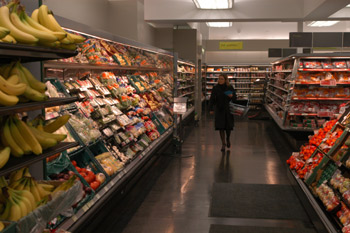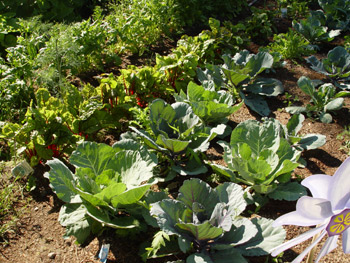Ten questions with…..Shane Dempsey

Shane Dempsey of Food and Drink Industry Ireland speaks to ShelfLife about the grocery code of practice, food labelling and that very contentious Eurostat survey
16 August 2010
1. Recent Eurostat figures claiming that Ireland was the second most expensive country in the EU to buy food sparked much debate. Do you think that this was an accurate portrayal of the cost of Irish food?
The first and most important thing about the recent Eurostat survey is that the research was carried out a full 15 months ago in March 2008. So it can’t reflect today’s reality in the grocery sector.
It did not take into account the 7% devaluation in the sector, resulting from significant price decreases retailers have introduced. These price decreases reflect the huge efforts by those in the sector to reduce costs through painful restructuring.
Food and Drink Industry Ireland (FDII) believes that nine out of 10 food companies froze or reduced wages and four out of 10 have introduced compulsory/voluntary redundancies.
It was disappointing, but not surprising, to see a range of media commentators try to resurrect the higher prices story in the sector. However, all the data points to lower prices in the sector.
So no, it doesn’t reflect today’s reality and in fairness to Eurostat, it outlined when its data was compiled in its press release, it just suited some to portray the survey as contemporaneous.
However, there are another range of issues with the Eurostat methodology that renders it ineffective in giving an accurate picture of Irish prices vis-a-vis European countries. Most people recognise that the Irish sector, within our small open economy with a widely dispersed population, has additional logistical costs. Irish consumers recognise that our higher hygiene and quality standards are a positive feature of the sector vis-a-vis other countries.
There are comparability issues with the survey which obscure the survey’s view of Irish prices. The Eurostat survey compares Ireland with the EU 27 which includes countries with significantly lower cost bases, particularly around wages, such as Romania. A more realistic and informative comparison can be drawn with equivalent western European Countries (EU 15). The survey also doesn’t take account of the quality of the service offering here – the quality of the food, convenience, quality of the retail experience, opening hours, high service level versus low density of population.
Finally, FDII has serious questions after a closer look at the comparability of the items Eurostat surveyed. For example, Ireland’s high quality fresh meat and dairy produce was compared in some cases to UHT milk. This rendered the survey informative but not definitive in our view. At a category level meat, dairy and cereals show us much closer EU 15 levels. Once deflation is taken account of, the gap is even narrower.
 2. Are Irish producers subject to stricter legislation/controls in the preparation of food than our European counterparts?
2. Are Irish producers subject to stricter legislation/controls in the preparation of food than our European counterparts?
Irish food companies are subject to many national and European regulations. The rigorous nature of this regulation has helped create Ireland’s reputation for high quality food that consumers demand. Irish food companies are excellent at conforming to these standards, which involves huge costs, but the return in reputation at home and abroad is beneficial.
Frustration can occur when there is an imbalance of enforcement of regulations on products on sale in Ireland but not produced here.
3. What are the main obstacles for Irish food processors in decreasing costs?
Irish food processors have significantly stripped out costs over the last two years in an effort to remain competitive. Indeed, across the sector it’s evident that prices are coming down significantly. This had lead to significant food devaluation of 7%. At the same time, the UK is experiencing food inflation of 3%, further narrowing the gap between UK and Irish prices. It’s important to remember that the prices on shelf for the consumer are set by individual retailers, not processors. There has been serious pressure on all stakeholders in the sector to reduce prices – most groups have done so by reducing costs. However, there are a number of levers that they can’t pull to reduce costs, ie the significant contribution to prices still comes from input costs such as energy which are within the remit of the Government to address.
4. Who is to blame for the high cost of food in Ireland?
The greatest contributors to any price differential in Ireland can be addressed by Government reducing energy costs, local authority charges and stripping out unnecessary regulation. Despite the recent media coverage of the Eurostat survey, Irish prices are more competitive than portrayed. This is borne out by a significant reduction in the numbers of people traveling North for shopping. It’s worth noting that the volume of sales in the grocery sector is increasing for the first time in a number of years, whilst the value of those sales is dropping. This means the consumer feels they are getting value and are voting with their feet. It also reinforces the efforts made by the sector to reduce prices – whilst other cost factors have remained static or increasing. The Government must do more to reduce the cost of doing business within Ireland allowing stakeholders in the grocery sector get products to the consumer for less.
 5. What is the latest on the Grocery Code of Practice? Has code facilitator, John Travers, done much to move things along? When should we expect to see it coming into effect?
5. What is the latest on the Grocery Code of Practice? Has code facilitator, John Travers, done much to move things along? When should we expect to see it coming into effect?
John Travers has met with a number of those groups who made a submission to the Department of Enterprise, Trade and Innovation’s consultation process on the code. The consultation process is designed to result in a voluntary code for the grocery sector by the end of the year. As the body who first asked for a code in the sector, FDII is pleased that the issue is to the fore and that commitments have been made for the introduction of a statutory code. It’s vital that the code focuses on eliminating unfair and arbitrary demands placed on suppliers by employees of retailers. Compliance with the code should become part of a retailer’s corporate culture once it becomes statutory. This will protect suppliers from arbitrary demands and practices outside normal contractual negotiations. This should curtail ‘buyer income’ in the sector allowing both retailer and supplier to focus more resources, investment and innovation on meeting consumer demands for quality, choice and value.
6. The supermarkets are very much against a Code of Practice. Do you think this will prevent it from becoming statutory or even being successful?
The introduction of a statutory code has been included in the revised programme for government. A lot will depend on the political environment in the coming years.
7. What are the main issues facing the Irish food industry apart from the cost of doing business?
The other main issues facing the Irish food industry centre on its competitiveness. With the world population expected to grow to 9.2 billion in 2050, there is a significant opportunity for Irish food companies to benefit from the expected 70% increase in demand for food globally. This will require food companies to reorganise fundamentally to achieve the scale necessary to meet this global demand.
Our dependence on the UK market, (we export 43% of all product there) combined with the weakness of sterling relative to the euro threatens many companies. Companies in addressing their competitiveness must also look at market diversification. The relevant state agencies should support companies strongly in this regard.
Another issue facing the agri-food industry is the Government’s sometimes disjointed approach to the sector. Recently, the Department of Agriculture and Bord Bia have launched ambitious strategies outlining their vision for the food sector. However, a number of other Departments including Health, and State Agencies impact on the ability of food companies to grow. The question needs to be answered about whether the Department of Agriculture should have control of the development of high-tech food companies for example? FDII believes it’s vital that a properly resourced implementation body is established to coordinate the myriad agencies that impact the food sector. This body should have particular focus on the Department of Agriculture’s Food Harvest 2020 strategy to measure progress and ensure that the needs of agri-food businesses are acted upon.
 8. What needs to be done to stem the growing obesity epidemic in Ireland?
8. What needs to be done to stem the growing obesity epidemic in Ireland?
The food industry has a strong track record in contributing to the promotion of healthy lifestyles. This ranges from significant product reformulation to responsible marketing to increased healthy options within product ranges. In addition, food companies have lead the field in a number of positive examples of food fortification with folic acid and vitamin D. These initiatives have been most successful when companies and state agencies and the relevant research institutes collaborate, such as is the case with the FSAI’s salt reduction initiative.
Similarly, tackling obesity requires a multi-stakeholder approach involving government, state bodies, industry and health professionals. As many economic, societal and psychological factors contribute to obesity, a group comprised of these stakeholders driven forward with political leadership is the most effective method of tackling the many factors contributing to obesity. A silo approach across different stakeholder groups won’t solve the obesity issue. For example, adopting draconian advertising restrictions will lead to the stigmatisation of certain foods putting jobs and growth at risk. There is little evidence that such legislation has any impact on obesity.
9. Labelling of food is a major issue at present. How have Irish food companies adapted to new guideline recommendations?
Irish companies ‘took’ to Guide Line Daily Amounts (GDAs) labelling very well with 78% of branded goods adopting the scheme and private label products exhibiting over 90% compliance. At the same time, a majority of Irish consumers opted for the GDA model in a 2009 FSAI survey.
10. Are there any downsides to strict labelling of products?
Effective food labelling is vital for today’s consumer. They provide essential information enabling healthier lifestyles and about products in general. Einstein’s quote, make things as simple as possible, but not simpler is a good rule of thumb in the context of labelling. This is reflected in the European Parliament’s recent ruling to support GDA labelling and rejecting the traffic light system. GDAs were designed by industry, based on extensive research, to provide simple, at-a-glance information, relevant to consumers, taking into account portion size.



 Print
Print






Fans 0
Followers